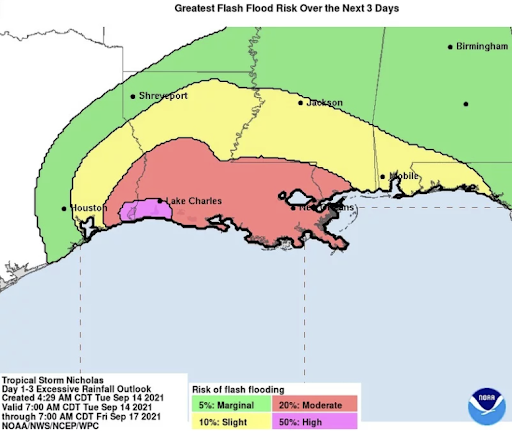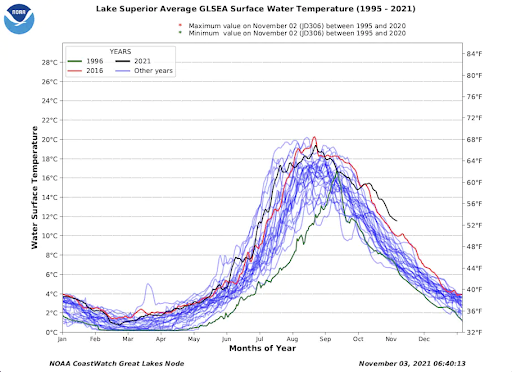A World with More Floods
Around the world, cities and towns are feeling the impact of the warming climate and the increasingly severe floods that come along with it.
In 2021 alone, millions of people from Tennessee to Germany have seen their lives upended by 100-year and 400-year floods, and it’s likely that these folks could see similar impacts and worse in their lifetimes.
Floods are getting worse and at a faster rate than governments and communities are able to enact mitigation measures.
So, what does a world with more floods look like? The United Nations Environmental Program puts it plainly:
More extreme flooding must be expected, and for the towns and cities where flooding has already occured, theirs will no longer be a ‘once in a lifetime’ risk but now far more frequent. The reality is that this is the world we live in with 1.1 degree Celsius of warming. These record temperatures, record floods are not anomalous, they are the beginning of a new norm, and the new records will continue to be exceeded, year after year.
Let’s look at how this global trend will impact flooding around oceans, floods, and rivers, and how communities and individual property owners can prepare for a future of increased flooding.
Warmer Oceans Will Continue to Deliver Major Coastal Floods
The last two Atlantic hurricane seasons have seen meteorologists run through the entire alphabet to name storms – what was, until recently, a rare occurrence.
As the oceans warm, the risk of coastal flooding will increase as well. A report from NOAA’s Climate Program estimates that “more than 8.6 million Americans live in areas susceptible to coastal flooding, which happens when winds from a coastal storm, such as a hurricane or nor’easter, push a storm surge – a wall of water – from the ocean onto land.”
While numbers like 8.6 million may seem intangible, recent storms have made the scale of this increased risk known. In September 2021, Hurricane Nicholas put the entire coast of Louisiana on alert for high risk of coastal flooding due to the storm surge, along with a flash flood warning that blanketed half the state.

Why do warmer oceans deliver more widespread coastal flooding?
One of the primary contributors to this phenomenon is the fact that warmer oceans amplify hurricanes. As Sara Peach reported for Yale Climate Connections, “A one degree Fahrenheit rise in ocean temperature can increase a hurricane’s wind speed by 15 to 20 miles per hour – enough to shift a storm to the next category of severity.”
For coastal communities, these increasingly severe storms signal increased water displacement and flooding on their properties.
Lake Temperatures Are on the Rise, and Property Owners Are Losing Ground
Lakes are no exception to the global warming we’re seeing across the globe. It can be difficult to trace the impacts of this trend in smaller lakes across the country, but we can see evidence of the warming climate at play in the largest inland bodies of water on the continent: the Great Lakes.

And this is no minor issue. Major lakefront metropolises including Milwaukee, Chicago, Marquette, and Detroit are already experiencing the impacts of the warming climate on their waterfront.
In 2020, Chicago’s South Side was faced with record flooding along its lakefront properties, displacing residents and cutting off major transportation routes.
Meanwhile, Michigan, the state with the greatest number of lakefront miles, now constantly monitors its shores for coastal flooding.
Rivers Across the Mississippi Watershed Are Primed to Overflow Their Banks
While the Colorado River is at risk of drying up entirely, the Mississippi watershed seems to be in a constant battle with its banks.
Earlier this year, Hurricane Ida infamously delivered flash flooding across 21 states, including Tennessee, where rapidly cresting rivers surprised many drivers and led to unprecedented damages and deaths in the region.
Iowa has seen record flooding year after year, thanks to its position on the banks of the Mississippi, and we may do well to watch how this state fares in the years to come, as its position in the center of the country makes its Quad Cities a helpful harbinger for other riverfront cities and towns.
The Best Way to Prepare for the Effects of Flooding Is to Start Today
A recent report from Nature found a 20-24 percent increase in the number of people around the world who are exposed to floods today. Using satellite technology to observe flooding, they predict that flooding will only worsen in the decades to come, but the good news is that their satellite methodology can be applied to help us better understand where floods are happening, how they’re changing, and what steps we might take to adapt.
And adapting to a wetter world is critical. Whether you’re the owner of a single-family home that needs to retrofit a coastal property or you’re part of a community effort to implement infrastructural flood mitigation efforts, the best thing you can do is insure what you have against major losses and take action to prepare for the next flood.
If you have questions about what flood mitigation efforts in your area might make a difference, reach out to your local city or state government, and talk to your neighbors about what steps they’re taking.
Or, if you’d like to start now, check out our resources on flood preparedness today.
Blog Articles
